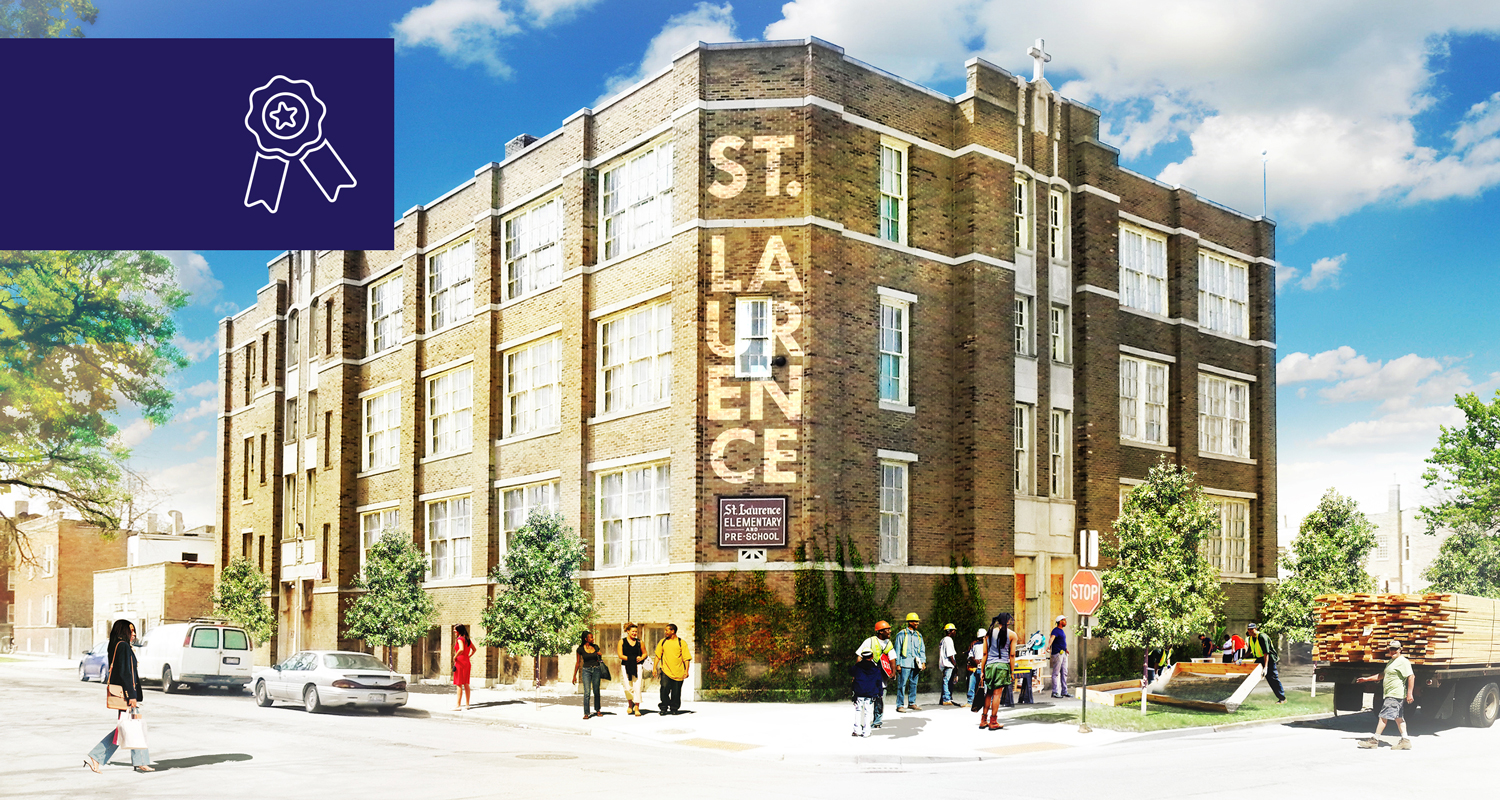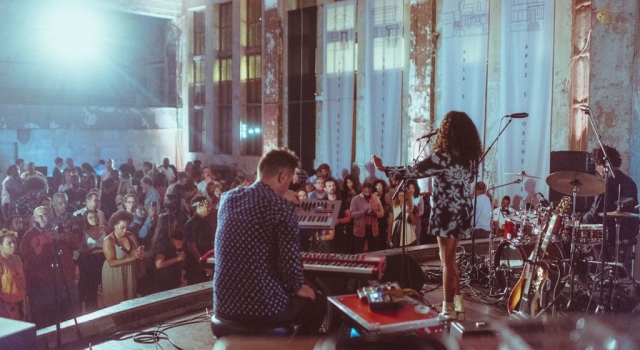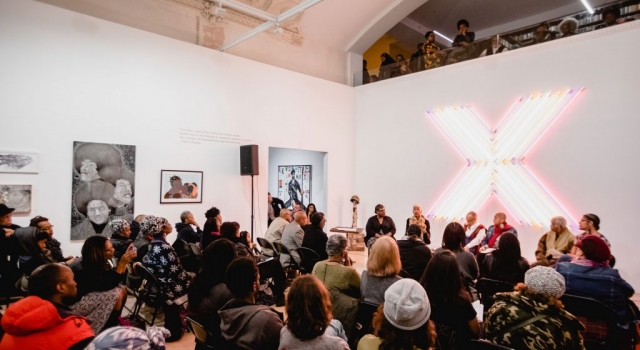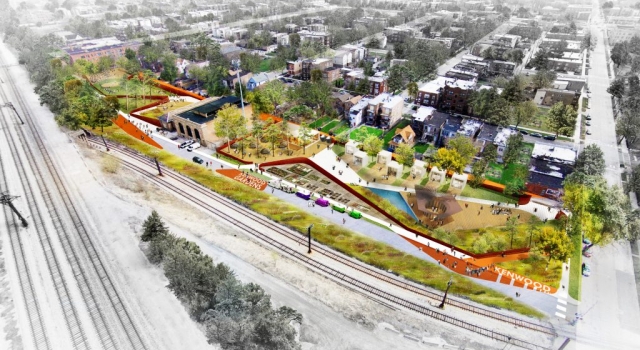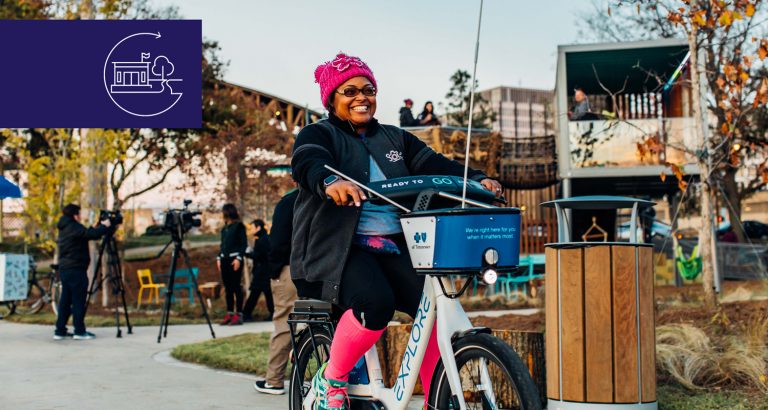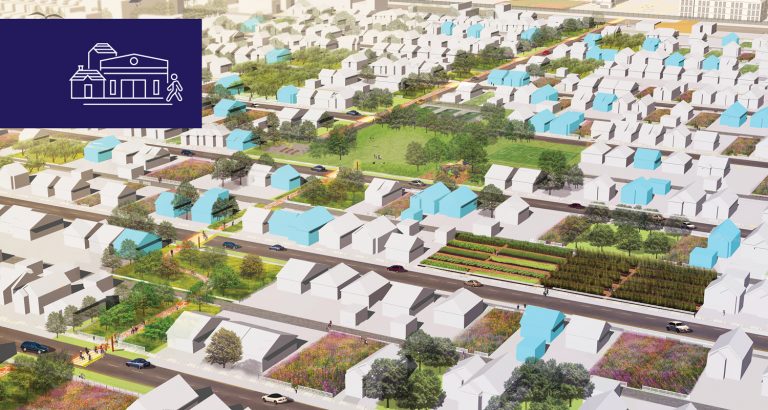Intentional design and implementation can give under-resourced communities access to high-quality public spaces that are on par with amenities provided by the private sector.
On Chicago’s South Side, a cluster of civic investments aim to serve a community long neglected by the private sector. Launched by renowned artist Theaster Gates, these new civic assets provide much-needed community space and arts programming while remaining attentive to the history and culture of the surrounding neighborhood. At the Stony Island Arts Bank, an iconic savings and loan building has been transformed into a community space and arts venue that offers film screenings, world-class art exhibitions, musical performances and panel discussions featuring prominent artists, scholars and activists. The physical structure and programming reflect Gates’s belief that all people deserve access to high-quality cultural assets. The Currency Exchange Café—a neighborhood coffee shop that takes its name from the currency shop that once operated in the same location—attracts people with a relaxed and welcoming atmosphere, sociable staff and a menu that draws on the culinary traditions of the surrounding community. These thoughtfully designed spaces also attract people from beyond the immediate neighborhood, demonstrating the broad appeal of high-quality civic assets.
LESSONS LEARNED
Creating welcoming public spaces requires flexibility. The Stony Island Arts Bank has proven its willingness to experiment in order to better meet the needs of area residents. For example, when staff learned that some in the neighborhood found the Arts Bank uninviting, they opened its yard for movies, barbecues and food trucks. This approach drew in residents and helped them see the Arts Bank as a place where they were welcome.
Start small and create moments of density. Places with low population density may have difficulty securing large numbers of people interested in using a particular public space. In these situations, starting small can make all the difference. Theaster Gates employed a block-level approach in Chicago, activating a series of small civic spaces that needed only a dozen or so people to come alive. Working within a limited geography, he used smaller-scale investments in civic assets to build interest and garner support for more ambitious efforts over time.
It’s important to strike a balance between serving the immediate community and having widespread appeal. High-quality civic assets have widespread appeal and in some cases may be used more by people living outside the surrounding neighborhood. Keeping the local community well informed about what’s happening and crafting special invitations for residents can help ensure that they feel included in these spaces. To take just one example, the Arts Bank throws summer yard parties for those living in the neighborhood. Meanwhile, the Rebuild Foundation’s weekly Coffee Tea & Chat program gives residents a forum for discussing what’s happening in their neighborhood and interacting with artists working to revitalize the area.
Case studies crafted in partnership with The Aspen Institute’s Center for Urban Innovation. With special thanks to Jennifer Bradley and Jessica Lee.
